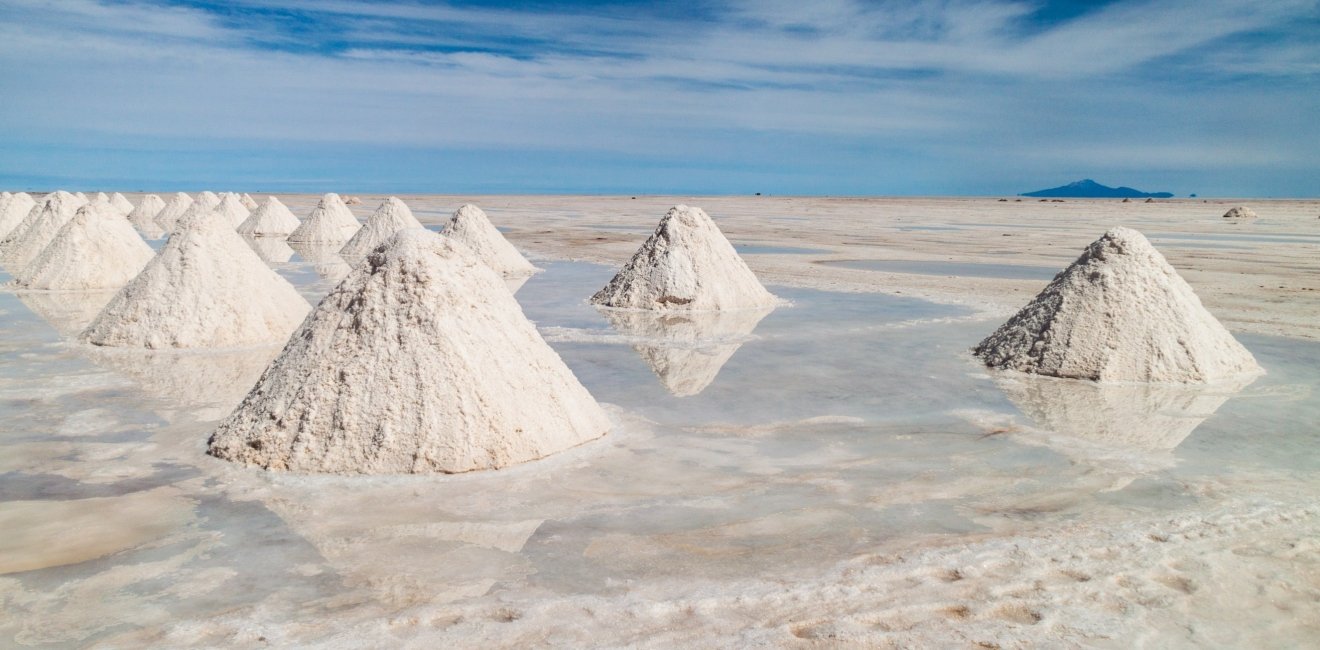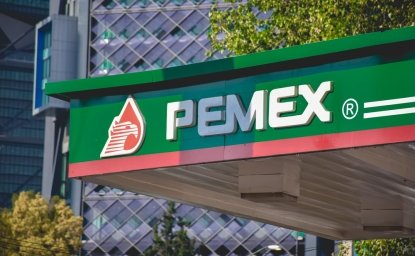Brazil has all the elements for becoming an engine of the rapidly evolving global energy transformation. The country boasts some of the world’s largest deposits of critical minerals essential to make possible the transition from fossil fuels. Brazil is already an exporter of some of these minerals. But beyond exporting raw materials, the country is also looking to develop critical minerals value chains at home, leveraging its leadership in renewable energy. In the process, Brazil could emerge as a trailblazer in green technology and climate change solutions.
Brazil’s lithium industry is proof of its critical minerals potential. In less than two years, Brazil went from zero exports to the fifth-largest lithium exporter in 2023, ¹ with projections of a fivefold production increase in the next five years. ² In the Southeastern state of Minas Gerais, “Lithium Valley” hosts 11 projects, while other parts of the country remain untapped.
Latin America’s largest economy is the world’s seventh-largest greenhouse gas emitter, mainly from deforestation in the Amazon. Since taking office in January 2023, President Luis Inácio Lula da Silva has promised to turn Brazil into a climate leader. He is fighting Amazon deforestation–which reached unprecedented levels under the previous government–by going after criminal gangs and illegal logging and mining.
Lula is also committed to realizing Brazil’s dream of industrialization. He launched a plan to hand out government subsidies and credit lines to kick start local industry and diversify Brazil’s traditionally agriculture-focused economy. ³ Brazil’s ample critical minerals and vast investor interest could help catalyze broader industrialization. That is, if politics do not get in the way and the right incentives are in place.
Brazil also aims to become a model for fighting climate change. The country already has one of the cleanest and most cost-competitive energy generation mixes in the world, as it has traditionally relied on hydropower for most of its electricity. As construction of large hydroelectric dams started to dwindle in recent decades, Brazil has been rapidly investing in other renewable sources of energy, such as onshore wind and solar. It is also emerging as one of the world’s most promising sources of offshore wind and green hydrogen. ⁴
Brazil’s Critical Minerals Potential[1]
In response to climate change, governments have agreed to limit the rise in global temperature to below 2°C above pre-industrial levels by 2050. To do so, they must reduce greenhouse gas emissions by replacing technologies that reply upon fossil fuels with alternatives, such as electric vehicles (EVs), with batteries powered by renewable energy. Those new technologies require critical minerals (Table 1).

While there has been some progress, countries are not on track to meet their climate commitments. Nonetheless, demand for critical minerals is projected to rise considerably in the next two decades: by over 40% for copper and rare earth elements (REE), 60-70% for nickel, and almost 90% for lithium. By 2040, graphite demand is expected to grow 25 times the level in 2020.⁵
Brazil is in an exceptional position to benefit from that increasing demand due to its huge natural resource endowment (Table 2). It holds the second-largest global reserves of nickel (at par with Australia) and of graphite. It is the third-largest producer of graphite and stands to become the third-largest REE supplier (the first outside Asia). Brazil also produces 14% of the world’s lithium, has the third-largest manganese reserves, and ranks among the top ten copper producers. Demand for niobium, another critical mineral, is expected to increase considerably due to its use in advanced battery technologies and in strengthening steel for clean energy applications. Brazil is the world’s largest producer of niobium, responsible for roughly 95% of global supplies, and holds the largest reserves. ⁶ Of the total niobium imports to the United States between 2019-2022, 66% originated in Brazil. ⁶
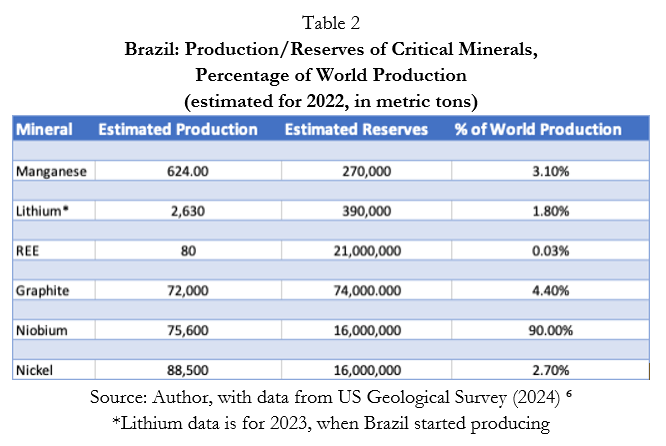
Latin America’s largest economy could also use current geopolitical tensions to its advantage. Brazil presents unique friendshoring opportunities for the United States and Europe as they try to break their critical mineral reliance on imports from China. The Asian country dominates the refining of key minerals needed for the energy transition: 44% of copper, 65% of lithium, 91% of graphite, and 97% of REE. It also dominates the world’s supply of graphite and processes 70% of nickel and 90% of manganese. ⁷ The United States depends on imports from China for its entire supply of REE and graphite. China also controls the upstream and downstream processes for the production of magnets, for which REE are essential. ⁸ China recently adopted export restrictions on graphite, which could impact prices and cause supply chain disruptions.
Brazil’s Challenges in the Global Critical Minerals Race
Global competition for critical minerals is rapidly increasing through attempts at diversifying supply sources, at technological innovation, and because of geopolitical efforts to limit dependence on China. New producing countries are emerging as demand for critical minerals increases. Meanwhile, the technologies that make the energy transition possible are constantly evolving; the minerals so highly demanded today may not be the ones used in the future. For that reason, there is a window of opportunity for countries with large critical minerals deposits to try to meet today’s market needs.
With mining projects taking decades to take off, it is in Brazil’s best interest to promptly take advantage of the moment. The development of its critical mineral wealth has been on the radar of Brazilian governments for almost two decades, yet Brazil’s production still lags its reserve potential (see Graph 1). ⁹
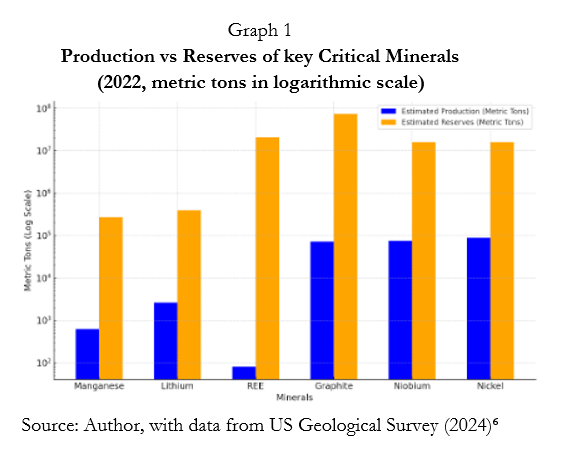
Three issues help explain Brazil’s slow development of its ample critical mineral resources. One is the lack of data about Brazil’s mineral wealth; only 27% of the country has been mapped. ¹⁰ Knowing the location of the country’s mineral endowment is essential for investor decision-making. It would also help in planning for public investments in infrastructure and research and development geared to the mining industry.
Another challenge is the convoluted fiscal regime and long process for obtaining mining and environmental licenses. The fiscal regime encompasses federal, state, and municipal taxes that sometimes overlap, including between state and local jurisdictions. Congress approved a tax reform in December 2023, but it is not fully implemented. Improving Brazil’s tax policies to attract investors is a national priority, a process led by a special office in the Finance Ministry. But the process is slow, with a ten-year transition period.
Finally, Brazil still has not developed an integrated, national critical minerals policy with development goals, timelines, and incentives. Such a strategy would send a strong signal to guide mining companies in making long-term investment decisions. Instead, there are stand-alone government initiatives, with mixed results.
In 2021, for example, then-President Jair Bolsonaro introduced the Pro-Strategic Minerals Policy, aimed at fast-tracking the licensing of critical minerals projects. ¹¹ An Inter-Ministerial Committee for the Analysis of Strategic Mineral Projects, with members from different government institutions, was tasked with selecting critical mineral projects, helping investors navigate the Brazilian bureaucracy, and accelerating reviews of applications for mining and environmental licenses. ¹²
Typically, there are several government departments involved in issuing permits, at the federal, state, and municipal levels, and they do not always coordinate. Each state has its own licensing agency and processes, with requirements based on local idiosyncrasies. It is practically impossible to predict how long it will take to obtain environmental approvals. This makes it difficult for investors, especially for large, complex, long-term mining projects. As of August 2023, around 70,000 mining licenses were pending approval by the National Mining Agency. ¹³
Bolsonaro’s 2021 fast-tracking initiative was particularly welcomed by junior investors in critical minerals, who usually lack the financial or human resources to navigate Brazil’s red tape. But the policy also received criticism for lack of transparency and for skipping important steps in reviewing a license application. The committee approved 19 projects, for a total investment of $12 billion. Most were in the Amazon, ¹⁴ raising sensitive questions about environmental protection.
Under Lula, environmental and social issues have taken center stage, which helps explain the more cautious approach to critical minerals. The granting of licenses has reportedly slowed. Yet Brazil remains committed to boosting critical mineral production. The New Growth Acceleration Program launched last year, includes $55 million per year between 2023-2026 for mineral exploration and geological research. ¹⁵ In addition, a new industrial policy adopted earlier this year prioritized the energy transition, innovation, and the so-called bioeconomy, and pledged $125 million between 2024-2026 to meet those goals. ¹⁶
At the same time, Lula is expected to implement stricter mining permitting policies. Were this to happen, investments in critical minerals could slow. The expected policy shift is an effort at avoiding conflicts with local communities. Mining has had a bad reputation in recent years, following the collapse of two tailings dams that held iron ore waste in Minas Gerais. The catastrophes, in 2015 and 2019, left hundreds of deaths, thousands displaced, and significant environmental damage.
New projects aimed at the energy transition have already drawn local opposition and tensions with local communities are expected to grow. In the Lithium Valley, locals complain of water and air contamination and say they are not benefitting from lithium investments, as was promised to them. Meanwhile, the arrival of large numbers of migrants seeking jobs in the mining sector could strain local services. ¹⁷
Critical Minerals to Accelerate Industrialization
Lula is set on transforming Brazil from a producer and exporter of ores into an industrial power that adds value to critical minerals. He hopes the energy transition will trigger that transformation. To achieve that goal, the government is looking for international partnerships that would expand its geological mapping, transfer know-how and technology for mineral processing, and invest in research and innovation. ¹⁸
Brazil cannot do it alone: it lacks technological know-how, has limited funding, and some regions–the Lithium Valley among them–lag in infrastructure development. The government is trying to tackle these issues through isolated measures, including a project to restructure the National Mining Agency. Earlier this year, the National Bank for Economic and Social Development (BNDES) launched a $200 million Strategic Minerals Investment Fund. ¹⁹ Fortunately, several countries also appear interested in supporting in Brazil’s critical minerals industry. Brazil is in conversations with the United States, Germany, and the European Union, while leaving open the possibility of partnerships with China. Brazil joined the UN Panel on Critical Energy Transition Minerals that promotes sustainable mining standards and practices, and it is using its 2024 G20 presidency and its leadership next year of the UN climate negotiations to promote Brazil’s role in the global energy transition.
In particular, the US government has expressed interest in partnering with Brazil to strengthen critical minerals supply chains. ²⁰ Brazil would welcome a critical minerals agreement (CMA) with the United States, similar to one signed by Japan, that would extend benefits to Brazil under the Inflation Reduction Act (IRA). On a visit to Brazil earlier this year, Secretary of State Antony Blinken welcomed Lula’s interest in joining the US-led Minerals Security Partnership, which encourages international coordination in securing mineral supply chains. In meetings with EU representatives, Brazil has also expressed interest in critical minerals agreements, independent of EU free trade negotiations with the Mercosur bloc.
From Vision to Reality
The lithium industry offers proof that it would not take much for Brazil to become attractive to investors in other critical minerals. Earlier this year, Lula canceled the requirement that lithium producers obtain a preliminary export permit from the National Commission of Nuclear Energy. Brazil now allows unrestricted foreign trade of lithium minerals, ores, and derivatives. The move is expected to attract $2.8 billion in lithium investments through 2030, which would put Brazil among the world’s top producers. ²¹
At the same time, lithium is also an example of the complexities that surround the development of Brazil’s critical minerals. Lithium is a key input for the batteries used in electric vehicles. But Brazil does not seem committed to promoting electric vehicles. Instead, as a world leader in biofuels production, it is focused on expanding the use of ethanol and biodiesel in transportation.
Even so, Brazil could benefit from involvement in the production of lithium-ion batteries for use in systems that store renewable energy, such as solar and wind. Renewable energy is high in the energy mix of Brazil, which plans to considerably expand its renewables output. In 2022, 77% of Brazil’s energy generation came from renewables, of which 79% was from hydro, 15% from wind, and 6% from solar. ²²
For Lula, to help industrialize Brazil by building critical minerals value chains, a national critical minerals strategy is a must. Such a strategy would help coordinate the policies across the national government and among state and local authorities and promote Brazil’s emergence as a global leader in critical minerals production and the development and manufacturing of green technologies. An effective policy would set medium and long-term goals for the development of critical minerals, considering national objectives and market signals. This would help identify both the greatest export opportunities for raw materials and the possibilities for local minerals processing and for building domestic clean energy value chains. It would also provide a comprehensive policy framework for attracting private investment, while considering social and environmental considerations. Absent a detailed roadmap that would help investors plan long-term projects in Brazil, the country’s critical minerals potential will remain largely untapped.
ENDNOTES
1. US Geological Survey. 2024. Mineral Commodity Summaries 2024. January 31. https://doi.org/10.3133/mcs2024.
2. Agência Brasil. 2023. “Brazil exports the first batch of green lithium to China.” Agência Brasil, July 31. https://agenciabrasil.ebc.com.br/en/economia/noticia/2023-07/brazil-exports-first-batch-green-lithium-china
3. Business Recorder. 2024. “Brazil’s Lula launches ‘re-industrialization’ plan for next decade.” Business Recorder, January 23. https://www.brecorder.com/news/40285155.
4. World Bank. 2024. Scenarios for offshore wind development in Brazil. Offshore Wind Development Program. https://documents1.worldbank.org/curated/en/099071824152541731/pdf/P1790301a6fb9702119dfe173210dbb9b56.pdf?_gl=1*1if4x93*_gcl_au*NDU4OTE3ODIxLjE3MjQxNzc3MTM
5. International Energy Agency. 2021. The role of critical minerals in clean energy transitions. https://www.iea.org/reports/the-role-of-critical-minerals-in-clean-energy-transitions.
6. US Geological Survey. 2024. Mineral Commodity Summaries 2024. January 31. https://doi.org/10.3133/mcs2024.
7. International Energy Agency. 2024. Global critical minerals outlook 2024. https://www.iea.org/reports/global-critical-minerals-outlook-2024.
8. The Oxford Institute for Energy Studies. 2023. China’s rare earths dominance and policy responses.
9. de Sousa Filho, Paulo, André Borges Serra, Ana Roberta, and Oliveira Serra. 2019. “Terras raras: Tabela periódica, descobrimento, exploração no Brasil e aplicações.” Química Nova 42 (10): 1208-1224.
10. Instituto Brasileiro de Mineração. 2024. Fundamentos para políticas públicas em minerais críticos e estratégicos para o Brasil. June. https://ibram.org.br/wp-content/uploads/2024/07/Fundamentos_para_politicas_publicas_em_minerais_criticos_e_estrategicos.pdf
11. Brasil. 2021. Decreto Nº 10.657, de 24 de Março de 2021. March 24. https://www.planalto.gov.br/ccivil_03/_Ato2019-2022/2021/Decreto/D10657.htm.
12. Ministério de Minas e Energia. 2024. Guide for foreign investors in critical minerals for the energy transition in Brazil. March. https://ibram.org.br/wp-content/uploads/2024/03/EN-PT-Guia-para-o-Investidor-Estrangeiro-em-Minerais-Criticos-para-a-Transicao-Energetica-no-Brasil-11032024.pdf
13. Chiappini, G. 2023. “Government will launch a plan to speed up the exploration of strategic minerals.” EPBR Agency, August. https://eixos.com.br/energia/governo-vai-lancar-plano-para-agilizar-exploracao-de-minerais-estrategicos
14. Instituto Brasileiro de Mineração. 2024. Por uma política de minerais críticos e estratégicos para o Brasil e para o futuro: Fundamentos e diretrizes. May. https://ibram.org.br/wp-content/uploads/2024/07/IBRAM_Fundamentos-e-diretrizes-MCE3_WEB-2.pdf
15. Casa Civil. 2024. Novo Programa de Aceleração do Crescimento/PAC. April. https://www.gov.br/casacivil/pt-br/novopac/transicao-e-seguranca-energetica/pesquisa-mineral
16. Ministério do Desenvolvimento, Indústria, Comércio e Serviços. 2024. Nova Indústria Brasil: Forte, transformadora e sustentável: Plano de ação para a neoindustrialização 2024–2026. Brasília. https://www.gov.br/mdic/pt-br/composicao/se/cndi/plano-de-acao/nova-industria-brasil-plano-de-acao.pdf
17. Ribeiro, Gustavo, and Isabella Cruz. 2024. “Minas Gerais ‘lithium valley’ raises concerns.” Brasil Daily (The Brazil Report), August 16. https://brazilian.report/newsletters/brazil-daily/2024/08/16/minas-gerais-lithium-education-debt
18. BNDES News Agency. 2024. “BNDES, MME and Vale launch public notice for fund that invests in strategic mineral projects.” BNDES News Agency, May 27. https://agenciadenoticias.bndes.gov.br/detalhe/noticia/BNDES-e-Vale-lancam-edital-para-fundo-que-investe-em-projetos-de-minerais-estrategicos
19. Campos de Melo, Patrícia. 2024. “US wants partnership with Brazil for critical minerals, says American ambassador.” Folha de S. Paulo, May 16. https://www1.folha.uol.com.br/internacional/en/world/2024/05/us-wants-partnership-with-brazil-for-critical-minerals-says-american-ambassador.shtml
20. BMI. 2024. Brazil mining report: Includes 10-year forecasts to 2032 (Q3 2024). Fitch Solutions Group Limited, July.
21. International Energy Agency. 2024. “Countries & regions: Brazil.” https://www.iea.org/countries/brazil/renewables.
22. Ministério de Minas e Energia. Guide for Foreign Investors in Critical Minerals for the Energy Transition in Brazil. 2024. https://ibram.org.br/wp-content/uploads/2024/03/EN-PT-Guia-para-o-Investidor-Estrangeiro-em-Minerais-Criticos-para-a-Transicao-Energetica-no-Brasil-11032024.pdf
[1] Brazil classifies minerals as strategic and critical. Strategic minerals include two categories: those whose import in large quantities impact Brazil’s trade balance and those that generate economic surplus for the country’s trade balance. Critical minerals are those important for high-tech processes, such as technologies used to make the global energy transition possible. This report focuses on the latter.
Author

Independent Energy Expert, Former Jennings Randolph Senior Fellow at the U.S. Institute of Peace

Brazil Institute
The Brazil Institute—the only country-specific policy institution focused on Brazil in Washington—aims to deepen understanding of Brazil’s complex landscape and strengthen relations between Brazilian and US institutions across all sectors. Read more


Latin America Program
The Wilson Center’s prestigious Latin America Program provides non-partisan expertise to a broad community of decision makers in the United States and Latin America on critical policy issues facing the Hemisphere. The Program provides insightful and actionable research for policymakers, private sector leaders, journalists, and public intellectuals in the United States and Latin America. To bridge the gap between scholarship and policy action, it fosters new inquiry, sponsors high-level public and private meetings among multiple stakeholders, and explores policy options to improve outcomes for citizens throughout the Americas. Drawing on the Wilson Center’s strength as the nation’s key non-partisan policy forum, the Program serves as a trusted source of analysis and a vital point of contact between the worlds of scholarship and action. Read more

Explore More
Browse Insights & Analysis
La esencia de la infraestructura global: perspectivas del líder de la industria Matt Harris
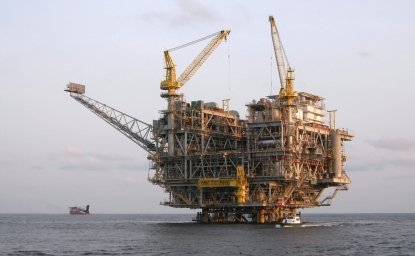
Debunking the Patient Capital Myth: The Reality of China’s Resource-Backed Lending Practices



